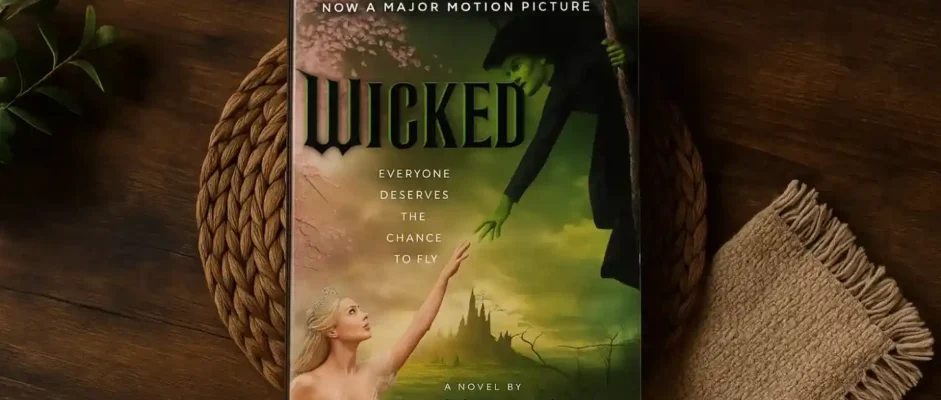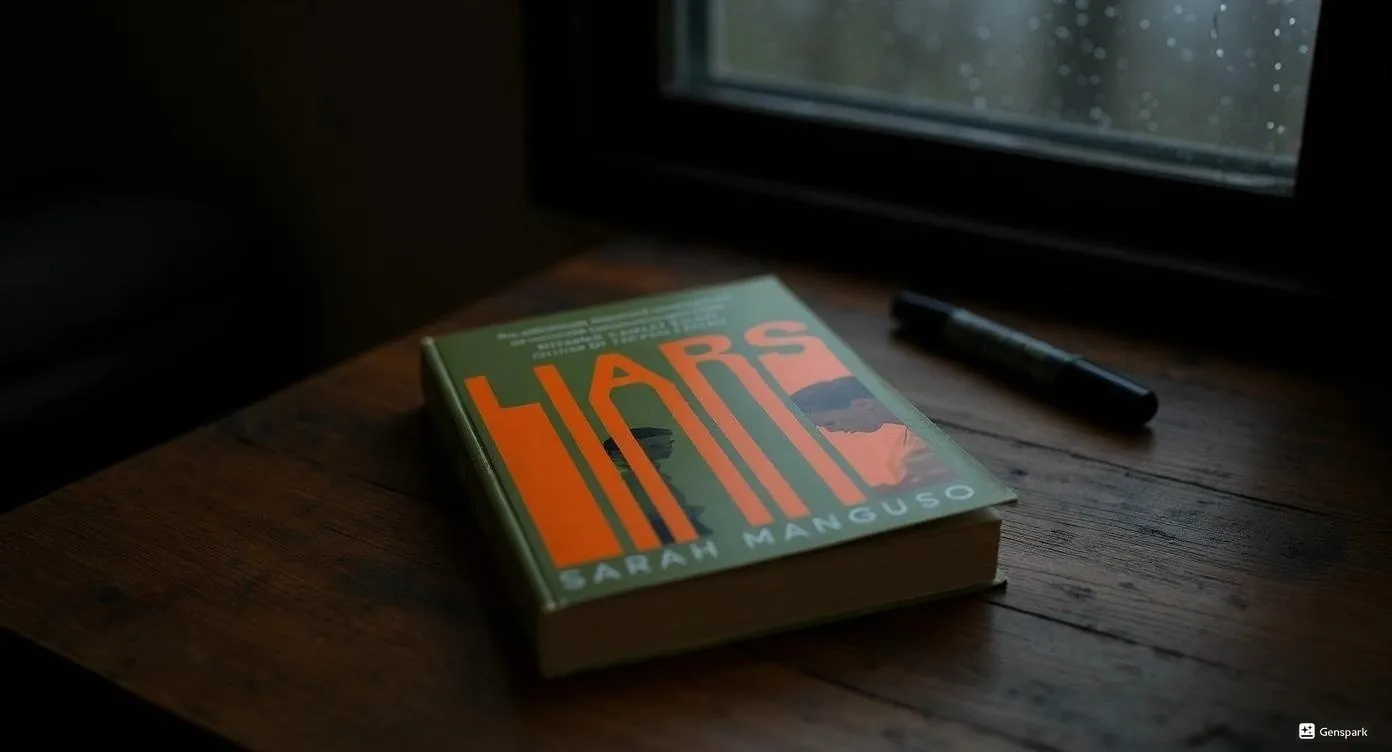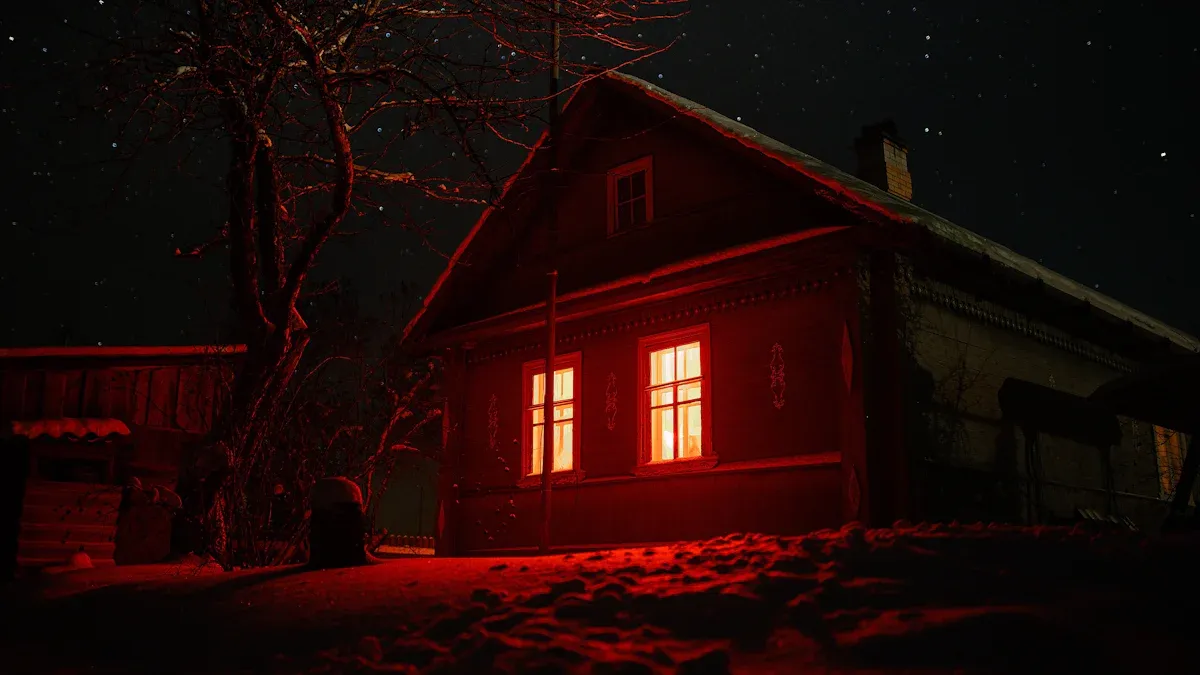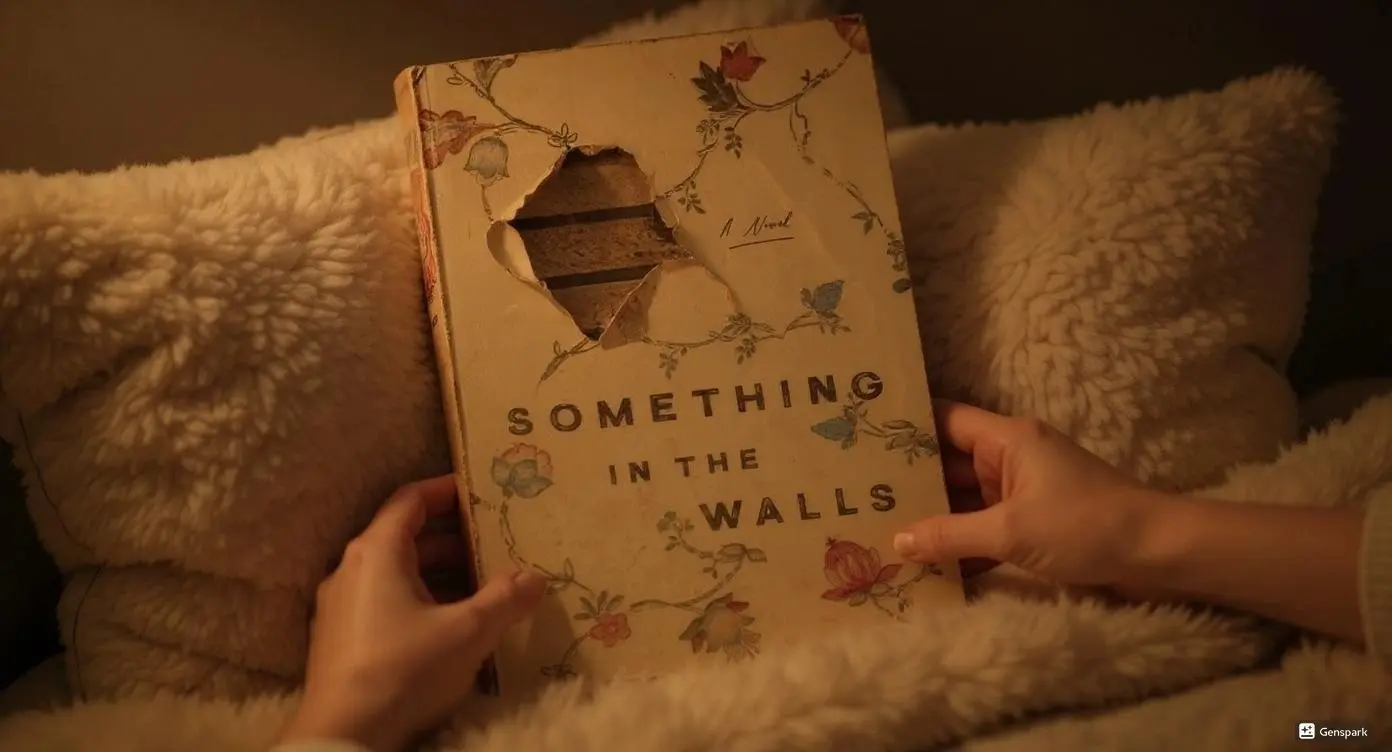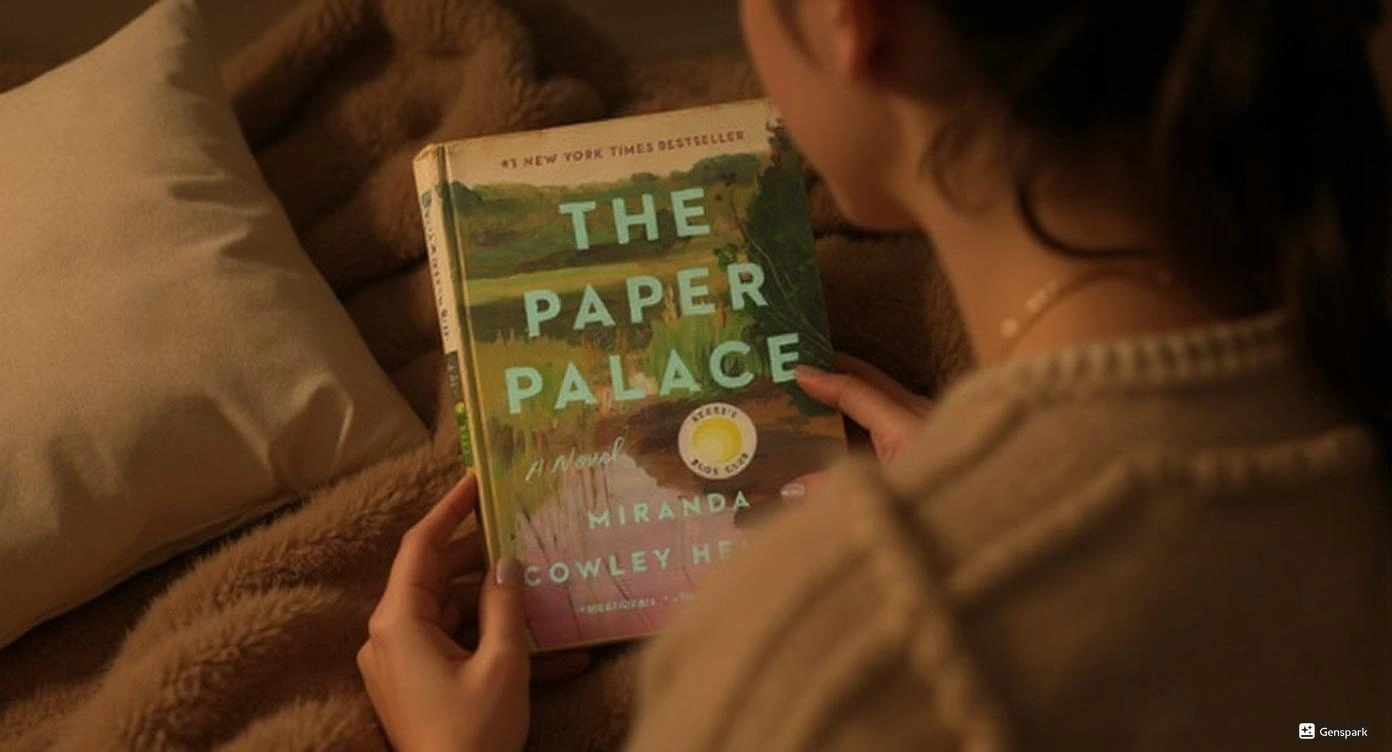Last updated on June 5th, 2025 at 04:55 pm
I’ve always been fascinated by stories that flip our understanding of classic tales on their head, and Wicked by Gregory Maguire does exactly that with L. Frank Baum’s beloved The Wonderful Wizard of Oz.
What struck me most about Maguire’s approach is how he takes the “Wicked Witch of the West” – a character we’ve all feared since childhood – and gives her a name, a backstory, and most importantly, a perspective that challenges everything we thought we knew. The book explores the friendship between Elphaba and Glinda against a backdrop of social upheaval, making us question who’s really good and who’s truly wicked.
If you’ve ever wondered about the origins of evil or felt like there was more to the Oz story, this book might just change how you see that yellow brick road forever.
Title: Wicked
Author: Gregory Maguire
Publishing Information: October 1995 by ReganBooks
Genre: Fantasy Fiction
Series: Book 1 in The Wicked Years
Page Count: 406 pages
Main Characters: Elphaba struggles with her green skin and radical politics, while Galinda transforms from shallow socialite to Glinda the Good.
Key Takeaways
- Wicked reimagines the classic Oz story through the perspective of the misunderstood “Wicked Witch of the West,” transforming Elphaba from a simple villain into a complex character fighting for social justice in a politically charged fantasy world.
- The novel excels in sophisticated world-building and character development, creating a morally ambiguous narrative where traditional concepts of good and evil are challenged, making readers question who the real heroes and villains truly are.
- Maguire’s writing tackles mature themes including political oppression, civil rights, and identity through fantasy allegory, offering profound social commentary that resonates with real-world issues while maintaining literary depth.
- The book demands patience from readers with its 495-page length, dense prose, non-linear timeline, and philosophical discussions that may overwhelm those expecting a light retelling of the beloved children’s story.
- This is literary fantasy rather than escapist entertainment, prioritizing character psychology and political exploration over magical adventures, making it ideal for readers seeking thought-provoking fiction with complex moral questions.
Plot Summary and Setting
Wicked transports readers to a dramatically reimagined Land of Oz that bears little resemblance to the colorful world we remember from childhood. Maguire crafts a politically turbulent society where animals fight for civil rights and social hierarchies create deep divisions among the population. This isn’t the whimsical Oz of ruby slippers and yellow brick roads—it’s a complex world grappling with prejudice and power struggles.
The story centers on the unlikely friendship between two roommates at Shiz University: Elphaba, the green-skinned outcast who will become the infamous Wicked Witch of the West, and Galinda (later Glinda), the popular blonde who seems destined for greatness. Their relationship unfolds against a backdrop of mounting political tension as the Wizard of Oz tightens his authoritarian grip on the land.
What struck me most about Maguire’s approach is how he flips the traditional narrative on its head. The opening scene immediately establishes that we’re seeing events from Elphaba’s perspective as she watches Dorothy’s arrival from the shadows. This shift in viewpoint forces readers to question everything they thought they knew about the story.
The plot spans several decades, following Elphaba from her university years through her transformation into the misunderstood “villain” we know from Baum’s original tale. Maguire weaves together themes of friendship, betrayal, and moral ambiguity while exploring how circumstances and choices shape our understanding of good and evil.
Character Development
Maguire’s greatest strength lies in his nuanced character development that transforms familiar Oz figures into complex individuals with rich inner lives. I found myself completely invested in these reimagined personalities who challenge every assumption about good and evil.
| Character | Role | Transformation Arc |
|---|---|---|
| Elphaba | Protagonist | Misunderstood activist to “wicked” witch |
| Galinda/Glinda | Deuteragonist | Shallow socialite to complex political figure |
| Fiyero | Love Interest | Carefree prince to thoughtful revolutionary |
| Dr. Dillamond | Mentor | Respected professor to oppressed victim |
Elphaba’s Journey
Elphaba’s transformation from a passionate university student to the misunderstood “Wicked Witch” represents some of the finest character work I’ve encountered. Maguire presents her as a smart and prickly individual who genuinely cares about social justice but struggles with her own identity and place in the world.
I watched her evolve from an idealistic young woman fighting for animal rights at Shiz University to someone increasingly isolated by her principles and circumstances. Her green skin becomes a metaphor for otherness while her sharp intellect and moral convictions drive her toward inevitable conflict with authority. The brilliance lies in how Maguire makes her sympathetic without excusing her actions.

Supporting Characters
The supporting cast receives equally thoughtful development that adds depth to the narrative. Glinda emerges as more than just a pretty face – she’s politically savvy and morally flexible in ways that both complement and contrast with Elphaba’s rigid principles.
I particularly appreciated Nanny’s portrayal as a wise and grounding presence who provides emotional anchor points throughout the story. Even characters like Boq the Munchkinlander feel fully realized rather than simple plot devices. Maguire gives each character distinct motivations and flaws that make their interactions feel authentic.
The way he develops Dorothy’s brief appearance also demonstrates his skill at subverting expectations while maintaining narrative coherence.
Writing Style and Narrative Structure
Maguire’s writing style in Wicked immediately caught my attention with its sophisticated blend of descriptive language and thought-provoking themes. His prose paints vivid pictures of Oz that go far beyond the simple fairy tale I remembered from childhood. I found myself completely immersed in his world-building as he skillfully weaves together humor and tragedy throughout the narrative.
What impressed me most was Maguire’s deliberate pacing and layered storytelling approach. The novel unfolds through multiple time periods spanning several decades which creates an intricate tapestry of Elphaba’s life. This structure allows readers to witness her transformation gradually rather than through sudden plot devices.
The narrative structure follows a non-linear timeline that jumps between Elphaba’s university years her political awakening and her eventual isolation. I appreciated how Maguire uses this fractured chronology to mirror the complexity of memory and identity. Each section builds upon previous revelations while introducing new moral questions.
Maguire’s prose style balances accessibility with literary depth. He explains complex political concepts and social dynamics without talking down to readers yet maintains enough sophistication to tackle weighty themes like oppression and identity. His descriptive passages create a believable Oz that feels both magical and grounded in reality.
The dialogue feels natural and period-appropriate while the internal monologues reveal character motivations effectively. I noticed how Maguire seamlessly shifts between different character perspectives without losing narrative cohesion. This technique particularly shines when presenting conflicting viewpoints about the same events allowing readers to form their own judgments about moral ambiguity.
Literary Craftsmanship And Style
Reading Wicked feels like stepping into a literary cathedral where every word has been carefully placed for maximum impact. Maguire’s prose doesn’t just tell a story—it constructs an entire philosophical framework that challenges everything you thought you knew about fairy tales.
Maguire’s Prose: Examining The Darkness And Density Of His Writing
Maguire’s writing style hits you immediately with its deliberate, measured cadence that feels almost hypnotic. His prose is dense and layered, demanding your full attention as he weaves political intrigue with moral complexity. This isn’t the light, breezy fantasy you might expect—it’s dark and textured, exploring themes of evil, soul, afterlife, and social injustice with the weight they deserve.
The language itself becomes a character in the story. Maguire’s sentences are built like intricate puzzles, each clause adding another layer of meaning. I found myself rereading passages not because they were confusing, but because they were so rich with subtext that I wanted to catch every nuance.
| Writing Style Elements | Analysis |
|---|---|
| Tone | Dark, textured, deliberately non-“shiny” |
| Pace | Measured, deliberate |
| Language Density | Heavy, layered, requires active reading |
| Thematic Focus | Evil, power, forgiveness, social justice |
Symbolism And Literary Devices That Lift The Fantasy To Literary Fiction
What sets Wicked apart from typical fantasy is Maguire’s sophisticated use of symbolism that transforms simple fairy tale elements into profound literary statements. Elphaba’s green skin becomes both literal difference and symbolic representation of social stigmatization. The clock of the time dragon serves as a recurring motif exploring destiny and the passage of time.
Maguire dismantles fairy tale conventions with surgical precision. The traditional broomstick becomes a symbol of freedom and rebellion rather than simple transportation. These symbolic elements don’t feel forced—they emerge naturally from the story, inviting readers to engage with deeper philosophical questions about identity and oppression.

The author employs literary devices more commonly found in serious fiction than fantasy novels. His use of recurring imagery deepens character arcs while maintaining the narrative’s momentum. This approach blurs the boundaries between fantasy and literary fiction, creating something entirely new in the process.
| Literary Device | Function in Story |
|---|---|
| Green skin symbolism | Social otherness and stigmatization |
| Clock motif | Destiny and temporal inevitability |
| Broomstick imagery | Freedom, rebellion, transformation |
| Political allegory | Contemporary social commentary |
| Moral ambiguity | Character complexity and reader engagement |
Themes and Social Commentary
Maguire weaves profound social commentary throughout the narrative, creating a story that resonates far beyond its fantasy setting. The novel challenges readers to examine contemporary issues through the lens of Oz’s reimagined world.
| Theme | Treatment | Real-World Parallels |
|---|---|---|
| Prejudice | Animal rights oppression | Civil rights movements |
| Political Corruption | Wizard’s authoritarian rule | Historical dictatorships |
| Religious Extremism | Unionist ideology | Fundamentalist movements |
| Environmental Destruction | Industrial expansion | Climate change concerns |
Political Allegory
I found the political undertones in Wicked particularly striking as Maguire crafts a clear allegory for authoritarianism and social control. The Wizard’s regime systematically oppresses talking animals, stripping them of their rights and reducing them to silence.
This mirrors real-world patterns of marginalization and persecution of minority groups. The government’s propaganda machine works overtime to justify these actions, painting resistance as terrorism while positioning the state as benevolent protector.
Elphaba’s transformation into the “Wicked Witch” serves as a powerful example of how those who challenge oppressive systems become vilified by the very structures they oppose, regardless of their noble intentions.
Good vs Evil
The novel masterfully deconstructs traditional notions of good and evil that I’ve come to expect from fairy tales. Maguire presents morality as a spectrum rather than clear-cut categories, forcing me to question who the real villains are.
Elphaba, branded as wicked, fights for animal rights and social justice, while the supposedly good Wizard perpetuates systemic oppression. Even Glinda operates in moral gray areas, choosing political expediency over principled stands. The story suggests that evil often stems from circumstances, choices, and societal pressures rather than inherent wickedness.
This complexity makes the characters feel authentically human, with their flaws and contradictions reflecting the moral ambiguities we all navigate in real life.
Identity and Belonging
Elphaba’s green skin becomes a powerful metaphor for otherness and the struggle to find acceptance in a hostile world. I was moved by how Maguire explores the psychological toll of being different, showing how society’s rejection can shape someone’s self-perception and life choices.
The novel examines various forms of identity—racial, political, and personal—and how these intersect to create complex individual experiences. Characters grapple with questions of authenticity versus adaptation, wondering whether to hide their true selves or embrace their differences despite social consequences.
The theme resonates particularly strongly in Elphaba’s relationship with Glinda, where class differences and social expectations strain their friendship, ultimately highlighting how external pressures can fracture even the strongest bonds.
Performance as a Fantasy Novel
As a fantasy novel Wicked delivers a sophisticated world-building experience that transforms the whimsical Land of Oz into a richly layered political landscape. Maguire constructs a believable alternate reality where talking animals face systematic oppression and magic operates within established societal rules rather than serving as convenient plot devices.
The fantasy elements feel grounded in consequence and logic. When Elphaba displays magical abilities they come with personal cost and social ramifications. I appreciated how Maguire avoids the typical fantasy trap of using magic to solve every conflict. Instead supernatural elements serve the story’s deeper themes about power and persecution.
| Criteria | Rating | Notes |
|---|---|---|
| World-building | Excellent | Rich, detailed Oz with political depth |
| Character Development | Outstanding | Complex, evolving protagonists |
| Plot Structure | Good | Occasionally dense but rewarding |
| Thematic Depth | Exceptional | Multiple layers of meaning |
| Originality | Outstanding | Fresh take on familiar material |
The novel succeeds in creating a lived-in world that extends far beyond the yellow brick road. Maguire introduces new locations like Shiz University and the Emerald City’s political districts while reimagining familiar places with authentic detail. The geography feels consistent and purposeful supporting both character development and plot progression.
However the fantasy elements sometimes feel secondary to the political allegory. While this creates thematic depth it may disappoint readers seeking traditional fantasy adventures with clear magical systems and epic quests. The darker tone and complex moral questions position Wicked closer to literary fantasy than escapist entertainment.
The pacing reflects this literary approach with extended character studies taking precedence over action sequences. I found this rewarding as a reader interested in psychological depth but it may frustrate those expecting the adventure-driven narrative typical of fantasy novels. Maguire prioritizes philosophical exploration over magical spectacle creating a unique but demanding reading experience.
Comparison to The Wizard of Oz
When I first picked up Maguire’s “Wicked” I expected a simple retelling of the classic tale I grew up with. Instead I discovered a complete reimagining that turns everything I thought I knew about Oz upside down. Where Baum’s original story presents a clear-cut world of good versus evil Maguire introduces moral complexity that makes me question who the real villains are.
The most striking difference lies in perspective. Baum’s Dorothy arrives as an innocent hero destined to defeat evil but Maguire shows us that same story through Elphaba’s eyes. Suddenly Dorothy becomes an unwitting pawn in a larger political game and the Wizard transforms from a bumbling but well-meaning figure into a calculating authoritarian leader.
Maguire’s Oz feels lived-in and politically charged compared to Baum’s whimsical fairyland. The talking animals aren’t just magical creatures—they’re an oppressed minority fighting for basic rights. The Emerald City isn’t simply a dazzling destination but the seat of a corrupt government that systematically marginalizes entire populations.
| Aspect | Original Oz | Maguire’s Version |
|---|---|---|
| Tone | Whimsical adventure | Dark political drama |
| Protagonist | Dorothy (outsider) | Elphaba (native) |
| Conflict | Good vs. Evil | Complex moral ambiguity |
| Setting | Magical wonderland | Politically charged society |
Perhaps most importantly Maguire strips away the black-and-white morality of the original. Elphaba isn’t wicked by nature but becomes the “villain” through her refusal to compromise her principles.
Meanwhile Glinda’s goodness comes with political calculations that would make any politician proud. This moral ambiguity forces me to reconsider everything I thought I understood about the characters and their motivations.
Book Versus Musical: Understanding The Adaptations
Having experienced both the novel and Broadway production multiple times over my 20 years of reviewing, I find the differences between these two interpretations fascinating and profound. The musical adaptation transforms the source material into something entirely different while maintaining the core emotional heart.
Core Differences In Tone, Content And Intended Audience
The book maintains a dark, politically charged atmosphere throughout its 495 pages, exploring deep into themes of religious extremism and governmental corruption. I found myself pausing frequently to process the heavy philosophical debates between characters about ethics and morality.
The musical, conversely, lightens these weighty themes considerably, focusing on spectacle and emotional accessibility. Where the book explores adultery and substance abuse explicitly, the stage version sanitizes these elements for broader appeal.
| Aspect | Book | Musical |
|---|---|---|
| Target Age | Adult readers 18+ | Family-friendly 8+ |
| Tone | Dark, introspective | Uplifting, theatrical |
| Content Depth | 495 pages of complex themes | 2.5 hours of simplified narrative |
| Political Commentary | Extensive, detailed | Streamlined, accessible |
Why The Two Versions Appeal To Different Sensibilities
The novel attracts readers who crave literary complexity and moral ambiguity – those willing to wrestle with uncomfortable questions about power and corruption. I recommend it to fantasy readers seeking philosophical depth rather than escapism.
The musical appeals to audiences wanting emotional catharsis through song and visual spectacle. Its accessibility makes complex themes digestible for families, while the book’s intellectual demands require serious commitment and mature perspective.
Both versions succeed within their respective mediums, offering complementary rather than competing experiences for different audience preferences and consumption contexts.

Reader Experience and Accessibility
My journey through Maguire’s dense narrative proved both rewarding and challenging. The 495-page novel demands patience and commitment from readers who might expect a lighter retelling of the Oz story. I found myself needing to slow down frequently to absorb the rich political commentary and complex character development that Maguire weaves throughout the text.
The book’s accessibility varies significantly depending on your reading preferences. Readers familiar with Baum’s original work will appreciate the clever references and inversions but newcomers shouldn’t feel lost. I noticed that Maguire provides enough context to make the story standalone while still rewarding those who catch the deeper connections to the source material.
| Reading Challenge Level | Description |
|---|---|
| Vocabulary | Sophisticated language with philosophical terms |
| Length | 495 pages requiring sustained attention |
| Themes | Complex political and social concepts |
| Pacing | Slow build requiring patience |
The non-linear timeline can initially confuse readers accustomed to straightforward chronological storytelling. I found myself occasionally flipping back to confirm character relationships and timeline details. However this narrative structure ultimately enhances the reading experience by mirroring how we piece together someone’s life story in real situations.
Young adult readers might struggle with the mature themes and dense prose while adult readers seeking thought-provoking fantasy will find themselves thoroughly engaged. The musical’s popularity has created expectations that don’t always align with the book’s darker more philosophical approach.
Pros
- Extraordinary worldbuilding that transforms Oz into a complex political landscape
- Rich character development that humanizes a traditional villain
- Thought-provoking themes exploring the nature of evil and social justice
- Innovative reimagining of a beloved classic with adult depth and nuance
- Sophisticated political allegory addressing totalitarianism and oppression
- Complex exploration of identity and otherness through Elphaba’s green skin
- Vivid descriptive prose that creates an immersive reading experience
Cons
- Dense, sometimes challenging narrative pacing that may alienate casual readers
- Explicit content and mature themes make it inappropriate for younger fans of Oz
- Political and philosophical complexity that can overwhelm the storyline
- Significant tonal shift from the whimsical original source material
- Some readers may find the darker elements and moral ambiguity uncomfortable
- Occasional narrative tangents that slow the overall progression
Final Verdict
Maguire’s “Wicked” stands as a masterful deconstruction that’ll forever change how you view the Land of Oz. It’s not an easy read but it’s absolutely worth the investment if you’re ready for a thought-provoking journey.
I’d recommend this novel to anyone who enjoys fantasy with substance and isn’t afraid to have their childhood assumptions challenged. The moral complexity and rich character development make it a standout in the genre.
While it may not be the right fit for casual readers looking for light entertainment the depth and sophistication of Maguire’s storytelling create an unforgettable experience. This book proves that sometimes the most wicked thing you can do is tell the truth.
Dionysus Reviews Rating: 7/10
Sip The Unknown—Discover Stories You Never Knew You’d Love!
Dionysus Reviews Has A Book For Every Mood
Biography & Memoir
Fiction
Mystery & Detective
Nonfiction
Philosophy
Psychology
Romance
Science Fiction & Fantasy
Teens & Young Adult
Thriller & Suspense
Frequently Asked Questions
What is Wicked by Gregory Maguire about?
Wicked is a reimagining of L. Frank Baum‘s “The Wonderful Wizard of Oz” told from the perspective of Elphaba, the misunderstood “Wicked Witch of the West.” The novel explores her unlikely friendship with Glinda against a backdrop of political upheaval in Oz, challenging traditional notions of good and evil while addressing themes of social justice, identity, and moral ambiguity.
How does Wicked differ from the original Wizard of Oz?
Maguire transforms Baum’s clear-cut world of good versus evil into a morally complex narrative. The Wizard becomes an authoritarian ruler, Dorothy is portrayed as an unwitting pawn, and Elphaba is shown as a principled individual fighting for justice rather than an inherently evil witch. The story strips away black-and-white morality for nuanced character development.
Is Wicked suitable for young readers?
Wicked contains mature themes including political oppression, social justice, and moral complexity that may challenge younger readers. The 495-page novel features dense prose and sophisticated concepts better suited for mature young adult or adult readers. The non-linear timeline and complex character development require patience and commitment from readers.
What are the main themes in Wicked?
The novel explores identity and belonging through Elphaba’s experience as an outsider, examines political oppression and civil rights through the treatment of talking animals, and deconstructs traditional morality by presenting good and evil as a spectrum. Friendship, betrayal, social justice, and the consequences of challenging authority are central themes throughout.
How long is the book Wicked?
Wicked is a 495-page novel that requires significant time commitment from readers. The dense narrative and complex themes make it a substantial read that spans several decades of Elphaba’s life, from her university years through her transformation into the misunderstood “Wicked Witch of the West.”
What makes Elphaba a compelling character?
Elphaba’s green skin serves as a metaphor for otherness and social rejection, making her a powerful symbol for marginalized individuals. Her evolution from passionate university student to misunderstood revolutionary showcases her unwavering commitment to social justice, while her complex relationship with Glinda adds emotional depth to her character development.
Is Wicked connected to the Broadway musical?
Yes, Gregory Maguire’s 1995 novel served as the inspiration for the internationally successful Broadway musical that premiered in 2003. While the musical adapts key elements from the book, it simplifies some of the novel’s complex political themes and focuses more heavily on the friendship between Elphaba and Glinda.
Should I Read “Wicked” If I Enjoyed The Wizard Of Oz?
If you enjoyed the original Wizard of Oz for its whimsical, light-hearted adventure, “Wicked” might not be what you expect. However, if you’re interested in a sophisticated, adult reimagining that challenges the original story’s moral simplicity and explores deeper philosophical questions, then “Wicked” offers a rich and rewarding reading experience.
